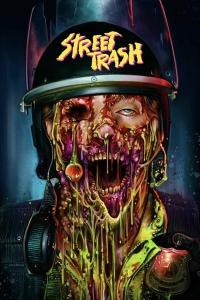Torrent details for "Big Data Science & Analytics: A Hands-On Approach by Arshdeep Bahga (2016-04-15) [NulledPremium]" Log in to bookmark
Name:
Controls:
Category:
Language:
 English
EnglishTotal Size:
108.43 MB
Info Hash:
15f9de7edf798ab757571334123996e76c019488
Added By:
Added:
14-12-2019 13:12
Views:
701
Health:

Seeds:
0
Leechers:
0
Completed:
276
For More Ebooks Visit NulledPremium >>> NulledPremium.com

Book details
Hardcover
Format: Pdf
Size: 108 MB
Publisher: VPT (1778)
ASIN: B01K95TSKI
We are living in the dawn of what has been termed as the “Fourth Industrial Revolution,” which is marked through the emergence of “cyber-physical systems” where software interfaces seamlessly over networks with physical systems, such as sensors, smartphones, vehicles, power grids or buildings, to create a new world of Internet of Things (IoT).
Data and information are fuel of this new age where powerful analytics algorithms burn this fuel to generate decisions that are expected to create a smarter and more efficient world for all of us to live in. This new area of technology has been defined as Big Data Science and Analytics, and the industrial and academic communities are realizing this as a competitive technology that can generate significant new wealth and opportunity.
Big data is defined as collections of datasets whose volume, velocity or variety is so large that it is difficult to store, manage, process and analyze the data using traditional databases and data processing tools. Big data science and analytics deals with collection, storage, processing and analysis of massive-scale data. Industry surveys, by Gartner and e-Skills, for instance, predict that there will be over 2 million job openings for engineers and scientists trained in the area of data science and analytics alone, and that the job market is in this area is growing at a 150 percent year-over-year growth rate.
We have written this textbook, as part of our expanding “A Hands-On Approach”(TM) series, to meet this need at colleges and universities, and also for big data service providers who may be interested in offering a broader perspective of this emerging field to accompany their customer and developer training programs.
The typical reader is expected to have completed a couple of courses in programming using traditional high-level languages at the college-level, and is either a senior or a beginning graduate student in one of the science, technology, engineering or mathematics (STEM) fields.
An accompanying website for this book contains additional support for instruction and learning (www.big-data-analytics-book.com)
The book is organized into three main parts, comprising a total of twelve chapters.
Part I provides an introduction to big data, applications of big data, and big data science and analytics patterns and architectures.
A novel data science and analytics application system design methodology is proposed and its realization through use of open-source big data frameworks is described.
This methodology describes big data analytics applications as realization of the proposed Alpha, Beta, Gamma and Delta models, that comprise tools and frameworks for collecting and ingesting data from various sources into the big data analytics infrastructure, distributed filesystems and non-relational (NoSQL) databases for data storage, and processing frameworks for batch and real-time analytics. This new methodology forms the pedagogical foundation of this book.
Part II introduces the reader to various tools and frameworks for big data analytics, and the architectural and programming aspects of these frameworks, with examples in Python.
We describe Publish-Subscribe messaging frameworks (Kafka & Kinesis), Source-Sink connectors (Flume), Database Connectors (Sqoop), Messaging Queues (RabbitMQ, ZeroMQ, RestMQ, Amazon SQS) and custom REST, WebSocket and MQTT-based connectors.
The reader is introduced to data storage, batch and real-time analysis, and interactive querying frameworks including HDFS, Hadoop, MapReduce, YARN, Pig, Oozie, Spark, Solr, HBase, Storm, Spark Streaming, Spark SQL, Hive, Amazon Redshift and Google BigQuery.
Also described are serving databases (MySQL, Amazon DynamoDB, Cassandra, MongoDB) and the Django Python web framework.
Part III introduces the reader to various machine learning algorithms with examples using the Spark MLlib and H2O frameworks, and visualizations using frameworks such as Lightning, Pygal and Seaborn.

Book details
Hardcover
Format: Pdf
Size: 108 MB
Publisher: VPT (1778)
ASIN: B01K95TSKI
We are living in the dawn of what has been termed as the “Fourth Industrial Revolution,” which is marked through the emergence of “cyber-physical systems” where software interfaces seamlessly over networks with physical systems, such as sensors, smartphones, vehicles, power grids or buildings, to create a new world of Internet of Things (IoT).
Data and information are fuel of this new age where powerful analytics algorithms burn this fuel to generate decisions that are expected to create a smarter and more efficient world for all of us to live in. This new area of technology has been defined as Big Data Science and Analytics, and the industrial and academic communities are realizing this as a competitive technology that can generate significant new wealth and opportunity.
Big data is defined as collections of datasets whose volume, velocity or variety is so large that it is difficult to store, manage, process and analyze the data using traditional databases and data processing tools. Big data science and analytics deals with collection, storage, processing and analysis of massive-scale data. Industry surveys, by Gartner and e-Skills, for instance, predict that there will be over 2 million job openings for engineers and scientists trained in the area of data science and analytics alone, and that the job market is in this area is growing at a 150 percent year-over-year growth rate.
We have written this textbook, as part of our expanding “A Hands-On Approach”(TM) series, to meet this need at colleges and universities, and also for big data service providers who may be interested in offering a broader perspective of this emerging field to accompany their customer and developer training programs.
The typical reader is expected to have completed a couple of courses in programming using traditional high-level languages at the college-level, and is either a senior or a beginning graduate student in one of the science, technology, engineering or mathematics (STEM) fields.
An accompanying website for this book contains additional support for instruction and learning (www.big-data-analytics-book.com)
The book is organized into three main parts, comprising a total of twelve chapters.
Part I provides an introduction to big data, applications of big data, and big data science and analytics patterns and architectures.
A novel data science and analytics application system design methodology is proposed and its realization through use of open-source big data frameworks is described.
This methodology describes big data analytics applications as realization of the proposed Alpha, Beta, Gamma and Delta models, that comprise tools and frameworks for collecting and ingesting data from various sources into the big data analytics infrastructure, distributed filesystems and non-relational (NoSQL) databases for data storage, and processing frameworks for batch and real-time analytics. This new methodology forms the pedagogical foundation of this book.
Part II introduces the reader to various tools and frameworks for big data analytics, and the architectural and programming aspects of these frameworks, with examples in Python.
We describe Publish-Subscribe messaging frameworks (Kafka & Kinesis), Source-Sink connectors (Flume), Database Connectors (Sqoop), Messaging Queues (RabbitMQ, ZeroMQ, RestMQ, Amazon SQS) and custom REST, WebSocket and MQTT-based connectors.
The reader is introduced to data storage, batch and real-time analysis, and interactive querying frameworks including HDFS, Hadoop, MapReduce, YARN, Pig, Oozie, Spark, Solr, HBase, Storm, Spark Streaming, Spark SQL, Hive, Amazon Redshift and Google BigQuery.
Also described are serving databases (MySQL, Amazon DynamoDB, Cassandra, MongoDB) and the Django Python web framework.
Part III introduces the reader to various machine learning algorithms with examples using the Spark MLlib and H2O frameworks, and visualizations using frameworks such as Lightning, Pygal and Seaborn.















































